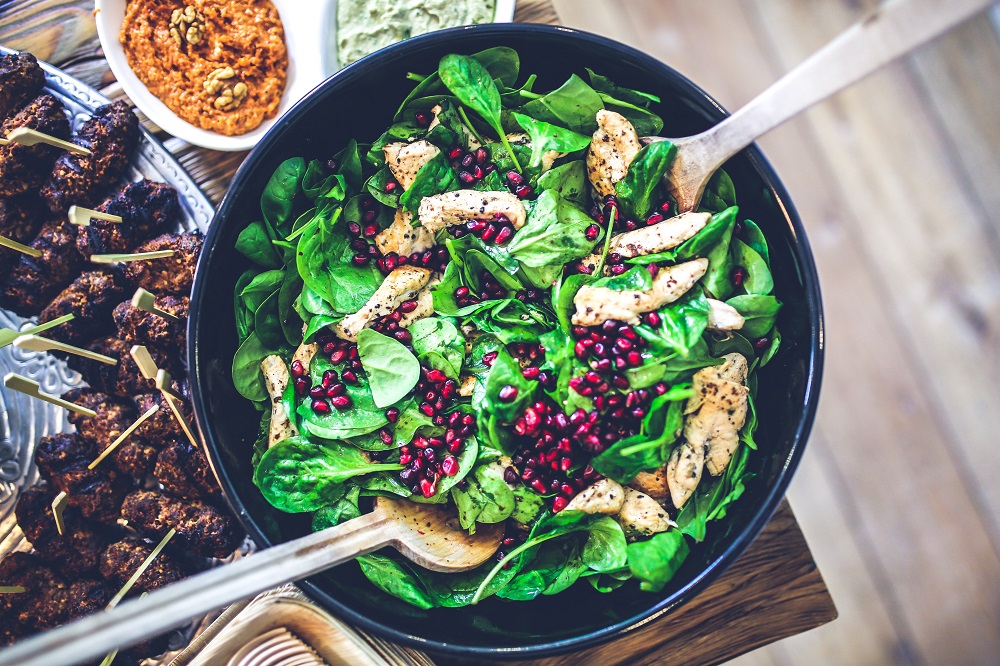
14 Feb If It was Good Enough for Cavemen, It’s Good Enough for You – The Paleo Diet Dissected
The year is 2000 BCE. Male homo sapiens spend the day hunting game, while the females forage for fruits, nuts and any other edible produce that grows in the area. The species have recently discovered fire that makes eating meat considerably easier than years before. This community is unaware that they are sustaining themselves on what a civilization that has evolved over four millennia will call the Paleo Diet.
Earning its name from the Paleolithic Era in human history, this eating philosophy comprises of lean meats, fish, fruits, vegetables, nuts and seeds. The diet does not have room for any processed foods, which include most dairy-related items, as well as refined grains. Many who have adopted this diet have done so because a cleaner meal plan has aided in weight loss, reduced blood sugar and blood pressure while simultaneously feeding the body with the vitamins and minerals it needs to function.
If our predecessors managed to wrestle saber-toothed tigers without having to a can of energy drink to support them, surely modern-day humans can make it through a day at the office without an unhealthy dose of caffeinated drink? You be the judge.
Here’s a basic plan of the diet below:
SAFE TO EAT
If it can be caught or picked, you are welcome to enjoy it as is. Most dieticians will urge you to seek out grass-fed beef and naturally-caught seafood if you want to stick as close to the Paleo diet as possible. Farmed fish tends to be an issue because the unnatural environment can stress the fish, weakening their immune systems, which leaves them susceptible to bacteria they might pick up from contaminated water, or each other. Though the conditions wild fish live under aren’t ideal either, if they are caught locally, you can easily do research into the marine conditions.
The same can be said for ethically reared cattle. You can enjoy your steak knowing that they weren’t pumped with growth hormones or treated badly – which has been proven to affect the quality of meat.
Eggs are another great source of protein that you can enjoy in moderation.
While you can eat fruits, vegetables, and nuts to your heart’s delight, dieticians warn against overindulging in both high sugar fruits and starchy vegetables. It will be in your best interest to avoid grapes, litchis, mangos, kiwi, pears, apples, peaches, papaya, pomegranate, granadilla and guavas, as well as potatoes (all), peas, pumpkin and butternut as the starch will raise your blood sugar – which is linked to diabetes.
THE NO-GO ZONE
Difficult though it may be, you’ll have to get rid of all the rice, crackers, cereal, bread and pasta in your pantry. These all emerged when our race developed certain machinery to alter the makeup of maize. Corn on its own is fine, barley too, but once you churn it down and start manipulating it by adding sugar etc, it starts to lose its natural goodness.
Legumes are a bit of a quagmire because, while they exist naturally, they aren’t allowed on the Paleo diet due to their high amounts of lectins and phytic acid. Typically, dieticians will encourage you to enjoy chickpeas, peanuts, lentils, carob and beans because they are high in fibre, iron and protein. This diet doesn’t allow for them at all.
DIETARY GREY AREA
Our prehistoric peers didn’t milk cows, making diary a contentious food item to consume on this diet. Some argue that it is okay to have grass-fed cow butter because it is full of Omega 3 Fatty Acids, but you decide based on your needs and preferences.
Healthy oils are another bit of a head-scratcher for the very same reason. There were no tools to extract oil from olives, coconuts, avocados and the like, but you’re given the green light because they have high alpha-linolenic acid which has proven to prevent heart and blood disease.
As always, before you embark on the Paleo journey, it is advised that you consult a health practitioner. These diets are followed by many all across the globe; it is imperative that you find the right meal plan to suit your body and lifestyle.
Sources:
https://www.everydayhealth.com/diet-nutrition/the-paleo-diet.aspx
https://www.eatingwell.com/article/290612/the-complete-paleo-diet-food-list-what-to-eat-and-what-to-avoid/
https://invisiverse.wonderhowto.com/news/problem-with-farmed-fish-their-food-is-spreading-antibiotic-resistance-0179710/
https://www.myfooddata.com/articles/high-sugar-fruits.php
https://www.firstquotehealth.com/health-insurance-news/starchy-vegetables-basics



No Comments